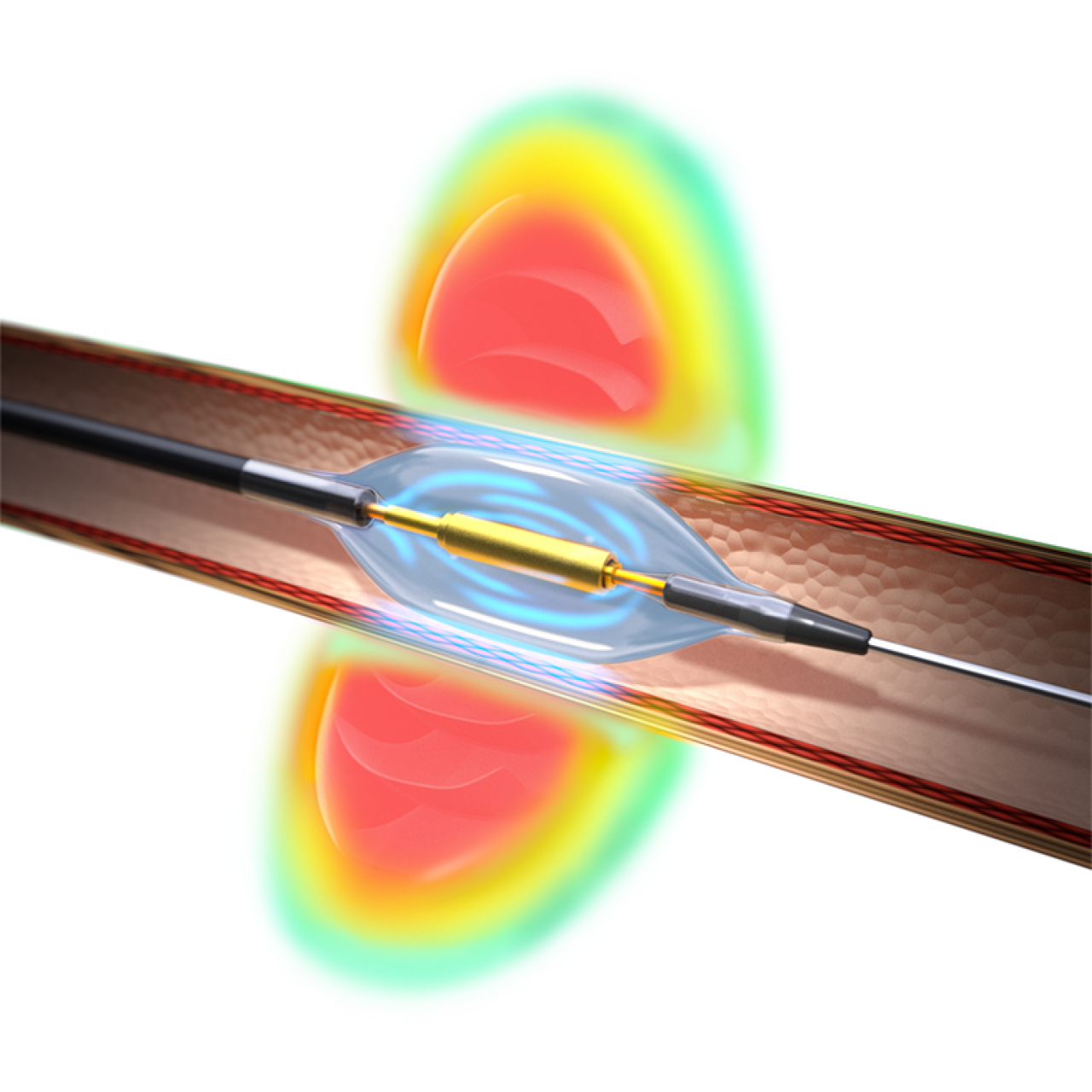A device that uses ultrasound to calm overactive nerves in the kidneys may be able to help some people get their blood pressure under control.
A study led by researchers at Columbia University and Université de Paris, France, has found that the device consistently reduced daytime ambulatory blood pressure by an average of 8.5 points among middle-aged people with hypertension.
Doctors usually prescribe lifestyle changes, such as reducing salt intake or losing weight, and medications to lower blood pressure in patients with hypertension. Yet about one-third of hypertensive patients are unable to control their blood pressure despite these interventions.
"Many patients in our clinical practice are just like the patients in our study, with uncontrolled blood pressure in the 150s despite some efforts," says Ajay Kirtane, MD, professor of medicine at Columbia University Vagelos College of Physicians and Surgeons and co-leader of the study.
Leaving blood pressure uncontrolled for too long can lead to heart failure, strokes, heart attacks, and irreversible kidney damage.
"Renal ultrasound could be offered to patients who are unable to get their blood pressure under control after trying lifestyle changes and drug therapy, before these events occur," says Kirtane, an interventional cardiologist and director of cardiac catheterization laboratories at NewYork-Presbyterian/Columbia University Irving Medical Center.
The study, published in JAMA Cardiology, tested the device, which is used in an outpatient procedure called ultrasound renal denervation. The device is still investigational and has not yet been approved by the FDA for use outside of clinical trials.
Kidney nerves and hypertension

Hypertension in middle age is thought to be caused in part by overactive nerves in the kidneys, which trigger water and sodium retention and release hormones that can raise blood pressure. (In older people, hypertension often occurs as blood vessels stiffen). Antihypertensive drugs work in different ways to lower blood pressure, by dilating blood vessels, removing excess fluid, or blocking hormones that raise blood pressure. But none of these medications target the renal nerves directly.
Ultrasound therapy calms overactive nerves in the renal artery, disrupting signals that lead to hypertension. The therapy is delivered to the nerves via a thin catheter that is inserted into a vein in the leg or wrist and threaded to the kidney.
Study results
The new study pooled data from three randomized trials encompassing more than 500 middle-aged patients with varying degrees of hypertension and medication use. Twice as many patients who received the ultrasound therapy reached their target daytime blood pressure (less than 135/85 mmHg) compared with patients in the sham groups.
"The result was almost identical across the different study groups, which definitively shows that the device can lower blood pressure in a broad range of patients," Kirtane says.
The procedure was well-tolerated, and most patients were discharged from the hospital the same day. According to Kirtane, improvements in blood pressure were seen as soon as one month after the procedure.
The treatment will be evaluated by the FDA in the coming months.
Bottom line for patients with resistant hypertension
The investigators expect the treatment could be offered as an adjunct to medication therapy and lifestyle changes for patients with uncontrolled hypertension.
"Once the device is available, we envision recommending it to patients who have tried other therapies first. The hope is that by controlling blood pressure, we might be able to prevent kidney damage and other effects of uncontrolled blood pressure," Kirtane says.
References
More information
The study, titled "Patient-Level Pooled Analysis of Ultrasound Renal Denervation in the Sham-Controlled RADIANCE II, RADIANCE-HTN SOLO and RADIANCE-HTN TRIO Trials," was published Feb. 28 in JAMA Cardiology.
Other authors: Andrew SP Sharp, Cardiff University, UK; Felix Mahfoud, Massachusetts Institute of Technology, Cambridge, MA; Naomi DL Fisher, Brigham and Women's Hospital, Boston, MA; Roland E. Schmieder, Friedrich Alexander University, Erlangen, Germany; Joost Daemen, University Medical Center Rotterdam, Netherlands; Melvin D. Lobo, Queen Mary University of London, UK; Philipp Lurz, University of Leipzig, Germany; Jan Basile, University of South Carolina, Charleston, SC; Michael J. Bloch, University of Nevada School of Medicine, Reno, NV; Michael A. Weber, SUNY Downstate, New York, NY; Manish Saxena, Queen Mary University of London; Yale Wang, Abbott Northwestern Hospital, Minneapolis, MN; Kintur Sanghvi, Deborah Heart and Lung Center, Brown Mills, NJ; J. Stephen Jenkins, Ochsner Medical Center, New Orleans, LA; Chandan Devireddy, Emory University School of Medicine, Atlanta, GA; Florian Rader, Cedars-Sinai Heart Institute, Los Angeles, CA; Philippe Gosse, Hôpital Saint-André - CHU, Bordeaux, France; Marc Sapoval, Université Paris, France; Neil C. Barman, ReCor Medical, Palo Alto, CA; Lisa Claude, ReCor Medical; Dimitri Augustin, ReCor Medical; Lisa Thackeray, NAMSA, Minneapolis, MN; Christopher M Mullin, NAMSA.
The study was funded by ReCor Medical Inc. Disclosures can be found in the paper.
This paper includes data from the RADIANCE II trial, which was published simultaneously in JAMA and was also co-led by Kirtane.






